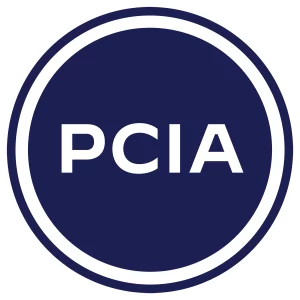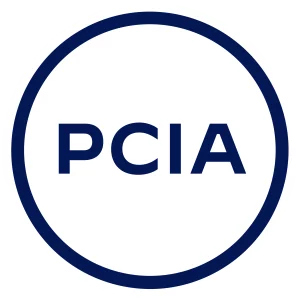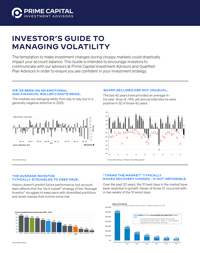While many know the general importance of life insurance, i.e., the financial protection it offers to your loved ones in the event of your passing away, many don’t know how it can be used beyond that for every phase of a financial plan. Read on to learn how life insurance can be leveraged into your financial plan throughout every phase of life.
What is Life Insurance?
Life insurance can provide financial protection for your loved ones by offering a death benefit paid to a beneficiary upon your passing. Policies vary widely, but they generally aim to replace lost income, cover debts, or fund future expenses. Some policies, like permanent life insurance, can also build cash value over time, which can be borrowed for various needs, including retirement income.
It’s important to work with your financial advisor to find the right policy for your needs, and remember, medical underwriting may be required.
Types of Life Insurance
- Term Insurance: Provides a death benefit if the insured passes away within a specified term (e.g., 1, 2, 10, 15, or 30 years). Premiums are typically level for a certain period but may increase with age. Once the term expires, the policy ends.
- Whole Life: A permanent policy with fixed premiums and guaranteed cash value accumulation.
- Universal Life: Offers flexibility in premium payments, death benefit amounts, and the policy’s cash value. It allows policyholders to adjust the death benefit and premiums based on changing needs, and in some cases, premiums can be paid using the cash value. Indexed Universal Life (IUL) policies are benchmarked to a market index like the S&P 500 (but not actually invested in the market) and policies may be credited based on performance, while offering protection from market downturns.
- Variable Life: Comes in two forms—variable and variable universal life. Both variable life insurance (VL) and variable universal life (VUL) insurance are permanent coverage that allocate cash value to market investment subaccounts which can lose value, but with variable life, there is a fixed death benefit, while with VUL, there is a flexible death benefit and adjustable premium payment amounts.
Accumulation Phase (Working Years)
This is the phase of life with a focus on growing wealth while managing debt and family responsibilities. One of the biggest potential financial risks during this time is income loss due to unexpected death. Therefore, policyholders will want their insurance to account for debt, living expenses, and any dependents’ needs. Disability insurance is also crucial in case of incapacitation. Here are a couple of common life insurance policies for this phase:
- Term Life Insurance: Cost-effective, covers income replacement needs.
- Permanent Life Insurance: Builds cash value, may support future retirement planning. May offer options in case of disability or need for long-term care.
Distribution Phase (Retirement)
It’s common for retirees to believe they no longer need life insurance since they are no longer earning a paycheck and their kids are all grown. However, there are still some considerations for retirees around income, long-term care and tax-advantaged legacy planning which life insurance may help address. Some life insurance strategies to consider in retirement are:
- Income Replacement: Social Security and pensions may decrease or stop when one spouse passes. Life insurance can help maintain income in case of a spouse’s death.
- Outstanding Debts: Even in retirement, some debts may remain. Life insurance can help shield your loved ones from that debt if you were to pass away before it’s paid off.
- Long-Term Care Planning: About 70% of Americans 65 and older will need some form of long-term care during their lifetime, according to the Administration for Community Living. Some permanent hybrid life insurance policies can now include coverage for long-term care (LTC) should you develop the need for it, or the death benefit for heirs if you don’t. (With traditional LTC policies, your premiums were paid for nothing if you never need long-term care.)
Transfer Phase (Tax-Advantaged Estate Planning)
To some, this phase will be the most important out of the three. While you may no longer be here for this phase, this is where you may leave an impact with all the hard work you did during your life. In most cases, life insurance death benefit proceeds are tax-free to heirs, and the money bypasses probate court. Additionally, permanent policies can sometimes provide leverage for people who would like to leave a larger amount to their children or grandchildren than what they have been able to accumulate. Therefore, leveraging life insurance to support a smooth transition of assets to beneficiaries can include:
- Legacy Planning: Insurance can help ensure financial security for a surviving spouse or heirs.
- Estate Tax Planning: Life insurance can be a tool for covering some estate taxes and helping preserve wealth for heirs.
If you want to learn how life insurance can be leveraged in your financial strategy, we’re here to help! Give Jason Noble a call today at (843) 743-2926 or call Andy Merchant at (316) 669-9413 to take the first step toward designing a financial plan tailored to you.
This article is for general information only and should not be considered as financial, tax or legal advice. Prime Capital and its associates do not provide legal or tax advice. Individuals should consult with an attorney or professional specializing in the fields of legal, tax, or accounting regarding the applicability of this information for their situations.
Advisory products and services offered by Investment Adviser Representatives through Prime Capital Investment Advisors, LLC (“PCIA”), a federally registered investment adviser. PCIA: 6201 College Blvd., Suite#150, Overland Park, KS 66211. PCIA doing business as Prime Capital Financial | Wealth | Retirement | Wellness.





